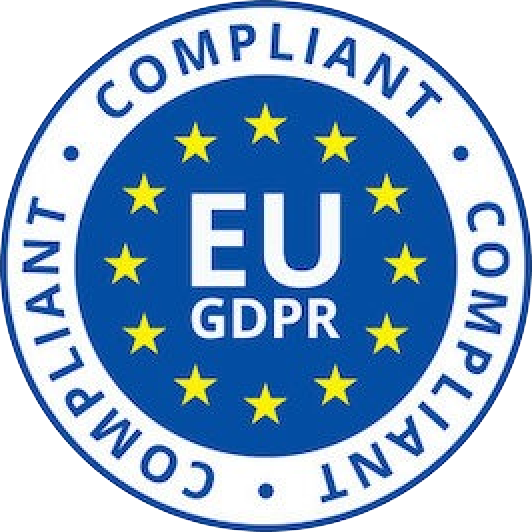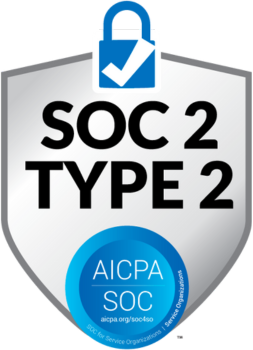

Abraham Lincoln famously said: “give me six hours to chop down a tree and I will spend the first four sharpening the ax” – and there is no lack of quotes that highlight the value of planning for success!
Good leaders know that comprehensive planning is key to effective project management. Taking an idea through successfully completing a project takes a lot of resources, collaboration, and hard work from a team – and requires a solid plan to optimize the process, set expectations, and support everyone’s efforts.
In this blog post, we’re going to break down how to develop an agile project roadmap with free and advanced templates so you can improve your team’s capacity planning across your next project.
What is a project roadmap?
So you want your project to be successful – but how do you build confidence in key stakeholders and also create a successful plan for your team to get the project off the ground? At this point you’re probably wondering: what is a project roadmap and how exactly is it going to help set the team up for success? A project roadmap is a high-level, strategic overview of a project’s goals and scope so that stakeholders, management, and contributors can all stay on the same page with a project as it progresses. These can be visually laid out in a timeline format, and/or built out as a project charter to launch a project and keep everyone up-to-speed as it unfolds.
While the concept of a project roadmap might sound a little broad, this step actually provides major benefits to everyone involved, across all stages of a project.
Benefits of a project roadmap:
- Keep efforts aligned with project end goals
- Keep everyone informed on project expectations
- Easily highlight status updates for stakeholders
- Visualize your timeline for task-level planning
- Be able to reprioritize when obstacles arise
- Improve your resource allocation to optimize your spend
Project roadmap vs. a project plan
There are many documents that make up a project management plan – so what’s the difference between a project roadmap and the project plan?
The project roadmap serves to define a project’s goals and highlights the overarching milestones of the timeline. It serves as an easily digestible central source of truth for everyone on the project - including executives, investors, department leads, and individual contributors - to reference for the project’s progress at a glance, and to realign with objectives as time goes on.
On the other hand, the project plan breaks down exactly how the project roadmap is going to be accomplished on a very granular level. These are typically built by project managers, break down roadmap milestones across relevant departments, and assign specific day-to-day tasks to individual contributors so the intended roadmap can be met.
A successful project plan works backwards from the project roadmap goal-ladder so that tasks can be planned around changing priorities before deadlines come up. The roadmap offers clear direction and expectations throughout the project – which is even more important when collaborating across separate teams and departments.
While the format of a project roadmap might vary from team to team – there are a few standard elements that make up a solid project roadmap.
Elements of a successful project roadmap:
- Objectives: The end goals of the project that serve as the North Star for the duration of the project - all other elements ultimately support the completion of these objectives.
- Milestones: Plotted stepping-stone achievements throughout the project’s timeline to help measure progress and successes.
- Deliverables: Any internal or external items that need to be produced to achieve milestones and make progress towards objectives.
- Resources: The allocation of resources and budget to produce deliverables and meet milestones to achieve the project objectives.
- Timeline: A timeframe breakdown of when the elements above need to be completed to achieve the project objectives.

How to create a project roadmap
Now that we’ve covered what a project roadmap is and why you should use one, let’s dive into how to build each element of your roadmap with tips for maximum success. You can develop these in a doc, spreadsheet, presentation, or directly in your work management app – whatever works best for your team. It’s important to note that all of these elements work off of each other to create an effective project management roadmap. So, as you work through the template, review previous sections accordingly!
Step 1: Objectives - what exactly do you want to achieve with the project?
Building out your project objectives is the first step towards creating a successful roadmap. This is the end goal the team will be working towards for the duration of the project, and becomes the foundation of all future planning. These should be formatted in short scope statements to clearly and concisely communicate the ultimate end result.
Here are 5 tips for building your project objectives:
- Define what you want to achieve by the end of the project.
- Involve the project team in the goal-setting process.
- Make sure your objectives clearly define the scope of the project. For example: “do a rebrand” vs. “develop new brand design including a color scheme, a light and dark variation logo, and new typography”.
- Make your objectives SMART goals (Specific, Measurable, Attainable, Relevant, and Time-bound).
- Review and refine your objective statements to be as succinct as possible.
Step 2: Milestones - which key events do we need to hit to reach the objective?
A project doesn’t go straight from kickoff to approval! Key milestones, or stepping stones, set the pace for the project through the finish line to track progress and help identify bottlenecks. Depending on the project scope, these milestones likely include iterations, requirement reviews, and approvals and visually represented on a Gantt chart to break down the project timeline in a digestible format.
Here are 5 tips to help you establish your project roadmap milestones:
- Identify which key events need to be met to reach the project objective (ex. approval from stakeholders, major deliverables from the project team, reviews from leadership).
- Set milestones for critical junctions in the project (but be careful not to overuse them for minor goals which can actually reduce productivity).
- Ensure the project milestones challenge the team sufficiently to fuel motivation, without making them completely unachievable.
- Make milestones accessible to everyone involved with the project?
- Appoint someone to track and make sure project milestones are met on time.
Step 3: Deliverables - which assets must be produced to hit set milestones?
While milestones flag important events across the project roadmap – each milestone requires certain deliverables to be met. Deliverables might include designs, reports, reviews, and final products. This is where more granular planning comes in to break the project milestones into smaller assets and set due dates according to the roadmap timelines. These deliverables will guide project managers down the road as they assign individual task work across the team, but that level of detail isn’t included in a high-level project roadmap.
Here are 5 tips to plan your project roadmap deliverables:
- Break down each project milestone into smaller, individual deliverables.
- Identify which deliverables are non-negotiable priorities vs. tasks that could be deprioritized if a blocker arises.
- Establish due dates for when each deliverable should be completed to stay on track with your set milestones.
- Note which deliverables are going to be internally vs. externally completed.
- Create a plan for how individual contributors will be assigned independent task work, and how dependencies will be managed to hit goals on time.
Step 4: Resources - how are you going to achieve your project objective?
Having well-developed objectives, milestones, and deliverables planned out is key to successful project management – but you still need to figure out exactly how you’re going to realize these great intentions within expectations. Planning your available resources across budgets, time, project managers, internal and expert contributors, and the team’s availability is what makes a successful project happen.
Here are 5 tips to note as you go through the resource planning of your project roadmap:
- Establish and approve a clear budget and timeframe for the project.
- Figure out the expertise you need to successfully complete the project, and evaluate who on your team has the capacity to take it on.
- Plan how you’re going to complete the project on time without overworking the team (ex. realistic workloads, reasonable working hours, fewer unnecessary meetings).
- Determine whether you’ll need external resources to complete the project before your deadline, and whether it’s within budget.
- Identify how you’re going to track resources over the course of the project timeline.
Step 5: Timeline - when is the project objective going to be completed?
A timeline is more than just a deadline! On the most foundational level, a timeline becomes the basis on which your project is planned. From milestones, to deliverables, to resource planning – a timeline informs deadlines and capacity planning to make sure the project objectives are achieved.
Here are 5 tips to establish your project roadmap timeline:
- Create a project scope statement around your objectives to accurately evaluate how much time you’ll need.
- Set a start date and end date for the project (based on external requirements and your team’s availability).
- Decide how you’re going to track your timeline (ex. line timeline vs. block timeline, Gantt chart, dependency maps).
- Plot exactly where your project milestones fall within your timeline, and make sure your available resources support this plan.
- Create a contingency plan for your planned timeline should blockers arise.

Top 4 project roadmap templates
Once you’ve gone through the above tips to get crystal clear on the overview of your project, it’s time to lay out your own project roadmap.
There are tons of free downloadable project roadmap templates out there, like these from SmartSheet which include a IT Project Roadmap Example Template (Excel | PowerPoint), a Project Portfolio Roadmap Template (Excel | Google Sheets), or even a 3-Year Project Roadmap Template (PowerPoint).
While simpler templates like these can work for some project teams, they don’t offer much in the way of optimizing processes like task assignment, progress tracking, capacity planning, and collaborative feedback over the course of a project. The good thing is, many work management tools offer comprehensive project roadmap templates for agile teams!
We’ve compiled the top 4 apps with project roadmap templates to help you build a killer roadmap and efficiently manage your team from start to finish with powerful project management features.
1. Jira - best for no-frills roadmaps

Jira is a work management tool leveraged across agile software teams to plan out roadmaps, manage projects, and track progress across all stages. With a clean interface and comprehensive templates for both a basic roadmap and an advanced roadmap – Jira is a great option for teams to build no-frills roadmaps, track goals and issues, and manage independent task work across the timeline to hit more goals ahead of deadlines.
Get the Jira roadmap template →
2. Asana - best for timeline roadmaps

Asana is a popular project management platform with comprehensive features to help improve team workflows from all sides. The Asana timeline template facilitates everything you need in an effective project roadmap - from multiple deadlines, to milestones, to task dependencies - all laid out in chronological order. As a visual timeline, this template offers managers, contributors, and stakeholders a clear overview of the project’s next steps and helps to identify bottlenecks before they arise. And for daily work – the roadmap can also be viewed as grid style or a Kanban board to help everyone stay on top of their responsibilities!
Get the Asana timeline template →
3. ClickUp - best for customized roadmaps

Aiming to be the “one app to replace them all”, ClickUp has quickly risen in popularity as a project management tool known for its granular customization capabilities. And ClickUp’s project roadmap template definitely delivers there! With 5 unique views including a workload view, a Gantt chart view, and a list view – team’s can completely optimize their project roadmap template with custom statuses and custom fields to create a plan that works best for their workflow and project needs.
Get the ClickUp project roadmap template →
4. ProductPlan - best for variety project roadmaps
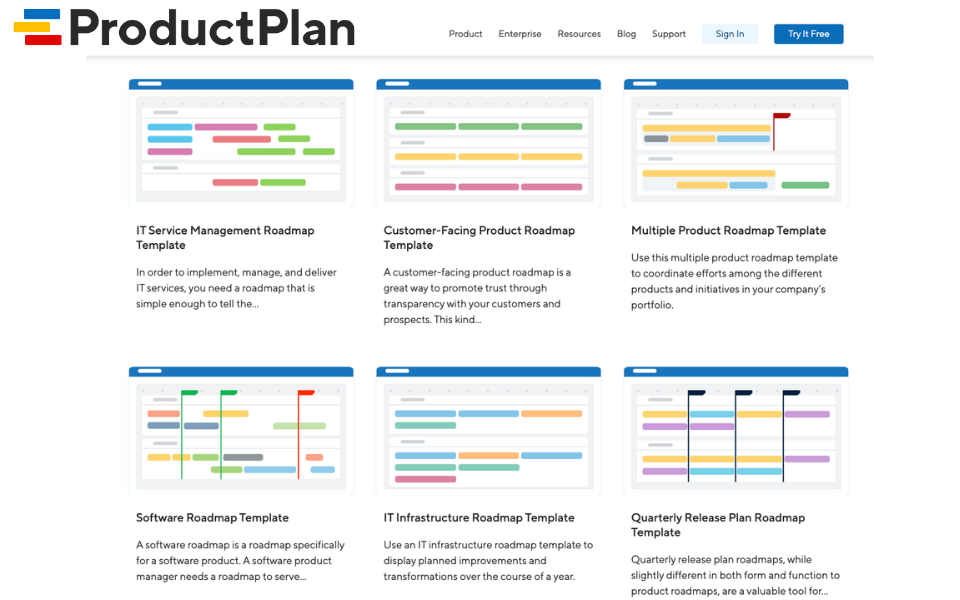
ProductPlan is a unique addition to this list, as a tool dedicated exclusively to project roadmapping. Offering 30 different project roadmap templates for basically any project need – ProductPlan is an awesome choice for project managers who are regularly planning many different projects for high-performing teams. Other standout features include customizable private links for viewers like external stakeholders, and flexible integrations with apps like Trello and Jira.
Get the ProductPlan roadmap templates →
Want to uplevel your project planning even further? Using these project roadmap tools with a productivity app like Reclaim.ai can help teams more accurately plan their capacity for a project by 12.1%. And when the time comes to assign work to individual contributors, teams can even sync their task lists directly from their task management platforms (including Asana, ClickUp and Jira!) to their calendar – so nothing falls through the cracks and deliverables always get done before deadlines.
Better planning = more successful projects 📈
Don’t skimp on time spent sharpening your ax (or - in this case - creating a project roadmap for your team!). Building a thorough roadmap helps managers establish expectations for their team and stakeholders, and facilitate a more efficient project plan.
And now that you know all the important elements of a roadmap and how to develop them for your future projects, you can help set your team up for success right from the start – with templates and project management app options to carry the team’s efforts through to success.
Do you use project roadmaps for better planning? Have a great tip or tool you want to share that we might have missed? Tweet us @reclaimai with your thoughts! We love hearing from you. 👋
Trend Reports
Ready for an AI calendar?
Auto-schedule your tasks, habits, breaks, & meetings on Google Calendar.
Start scheduling →It's free! 🎉






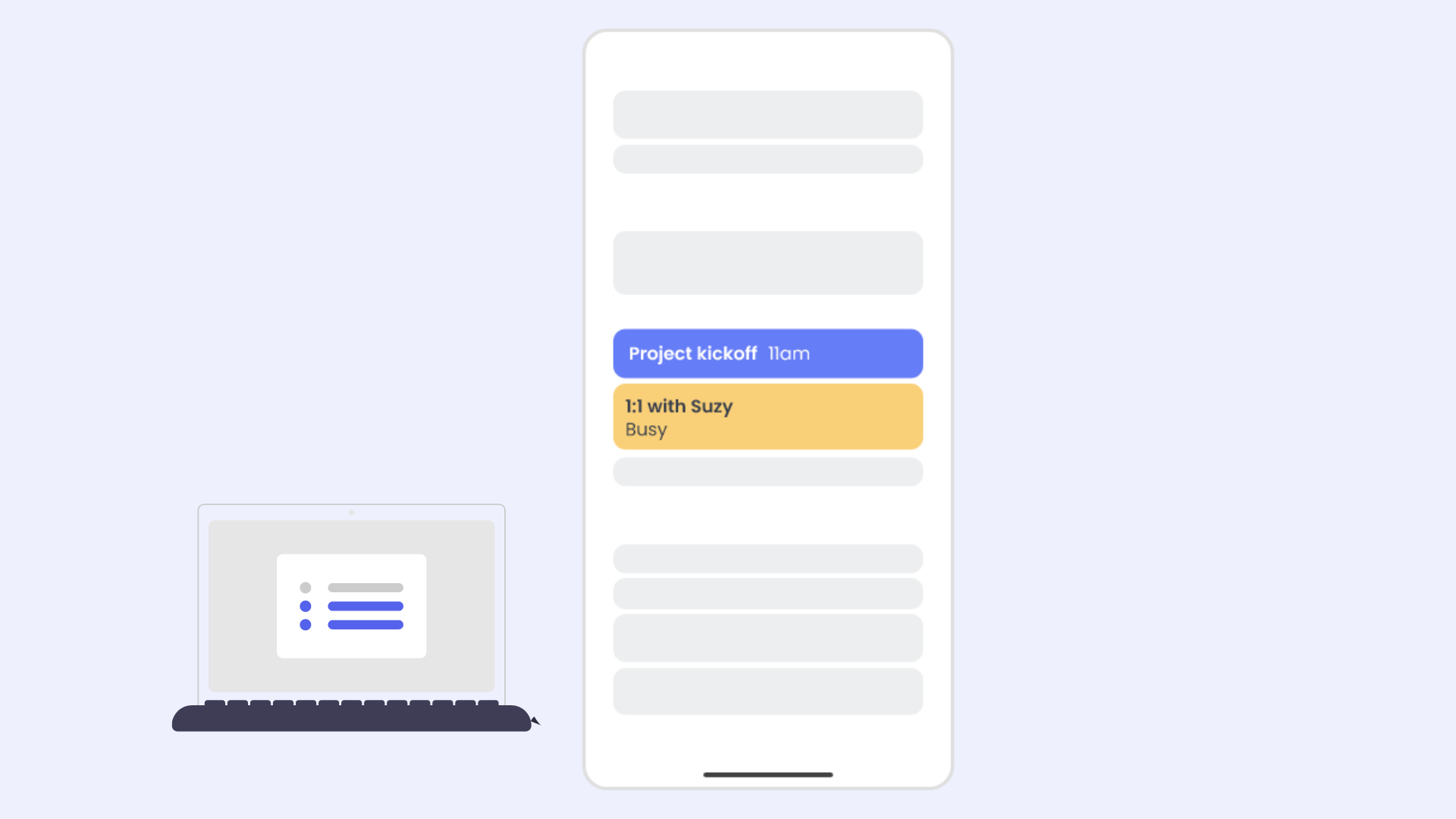
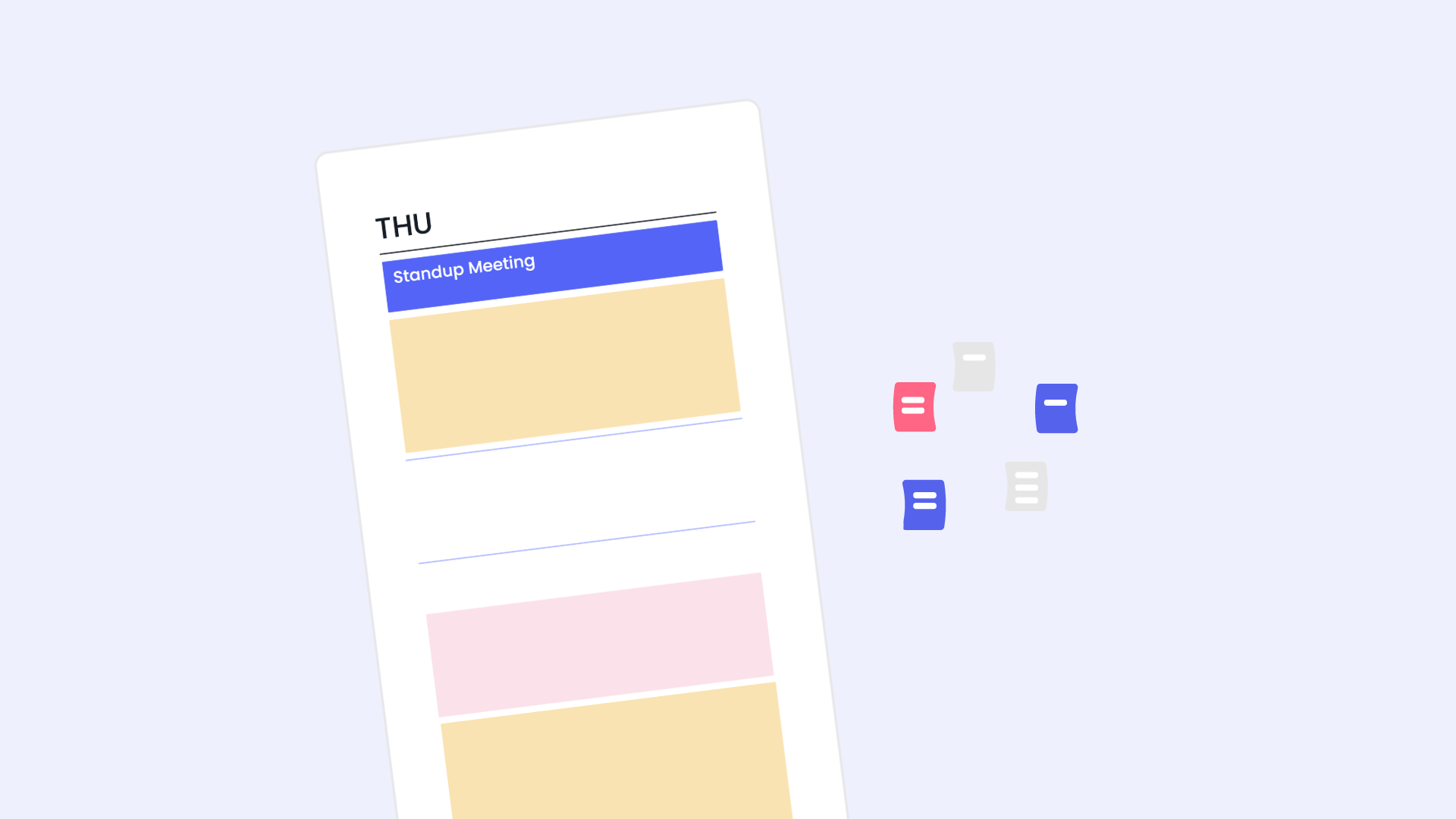



.svg)
.svg)
.svg)
.svg)
.svg)

